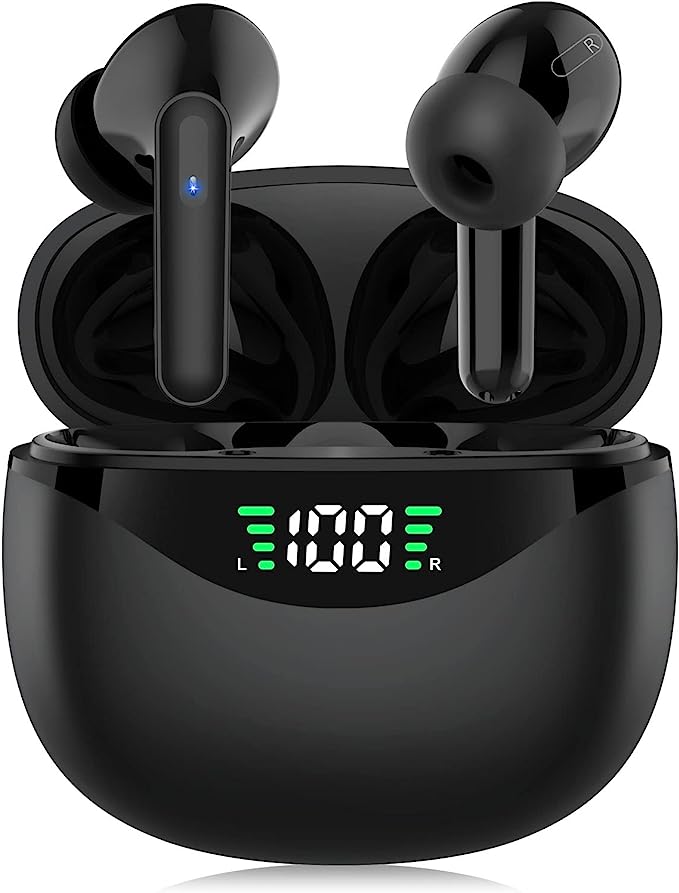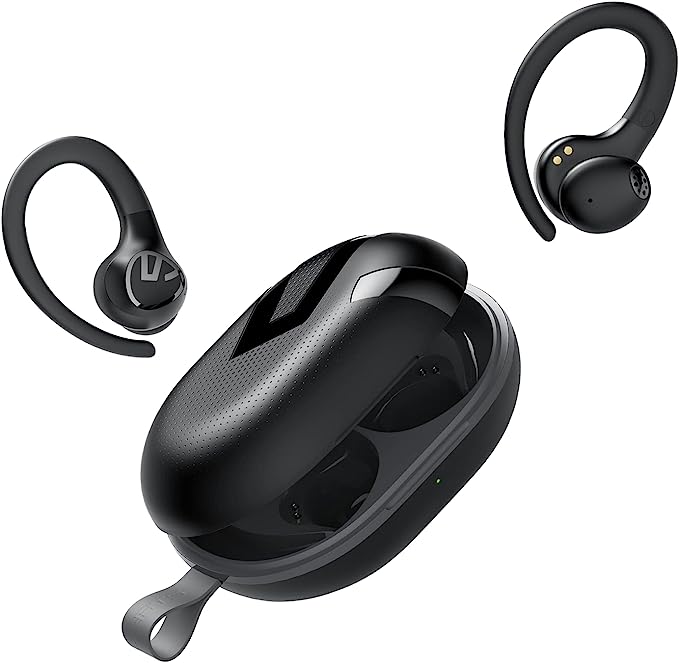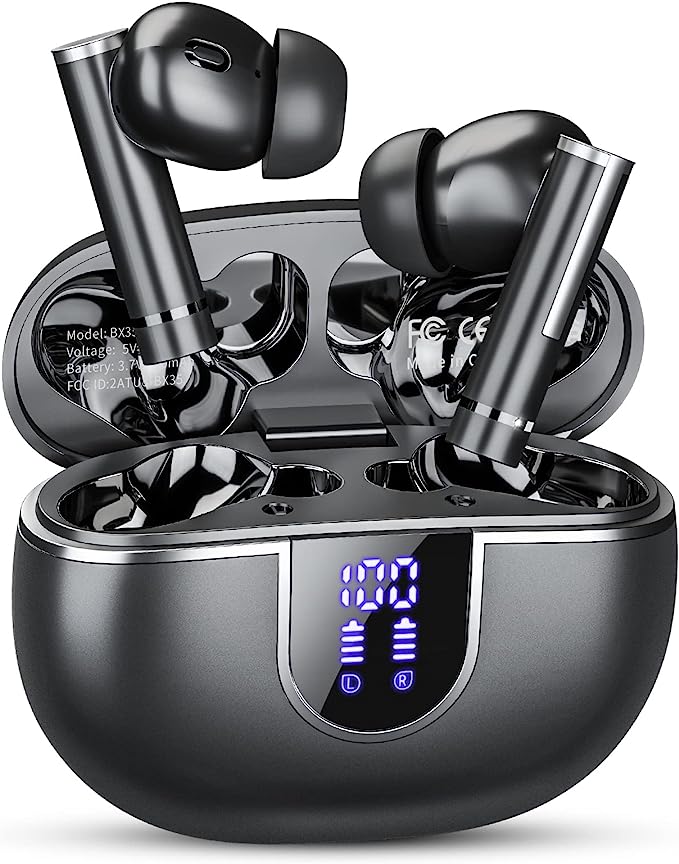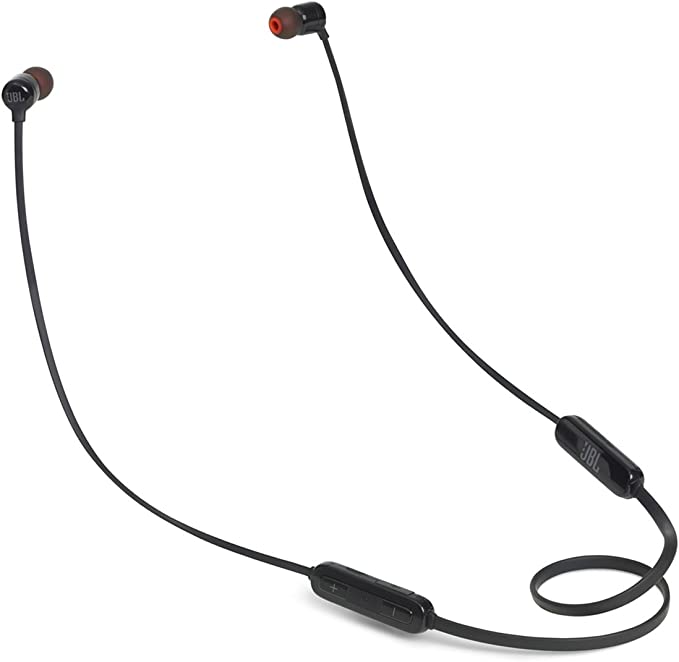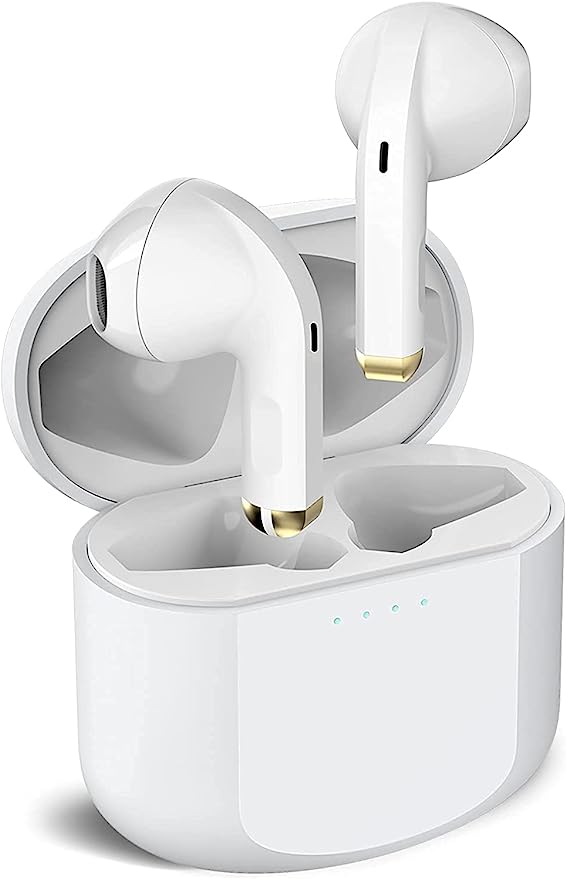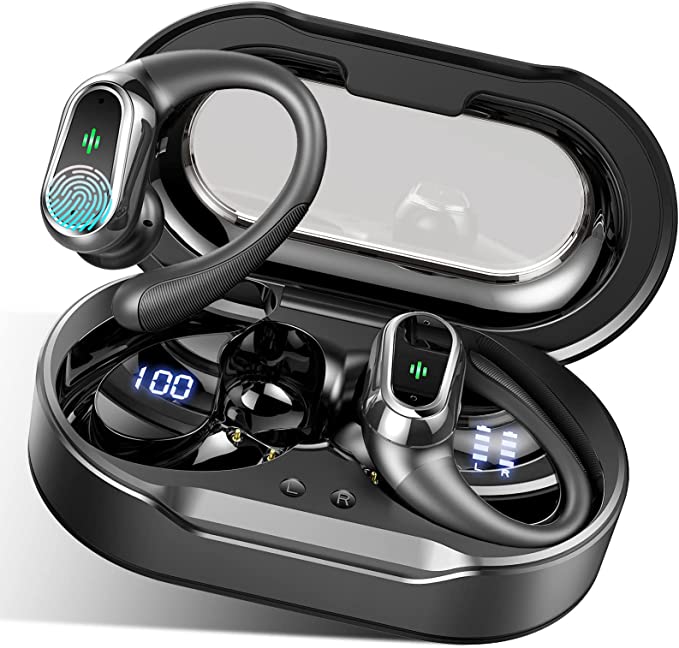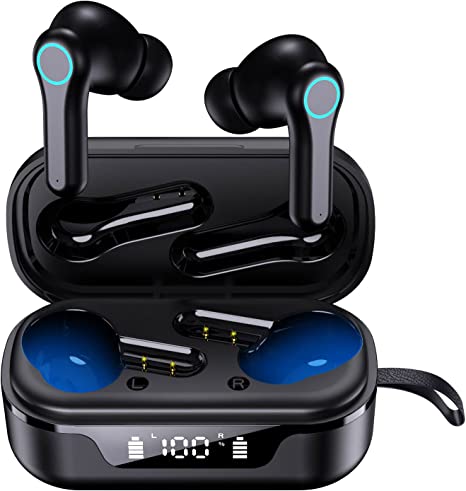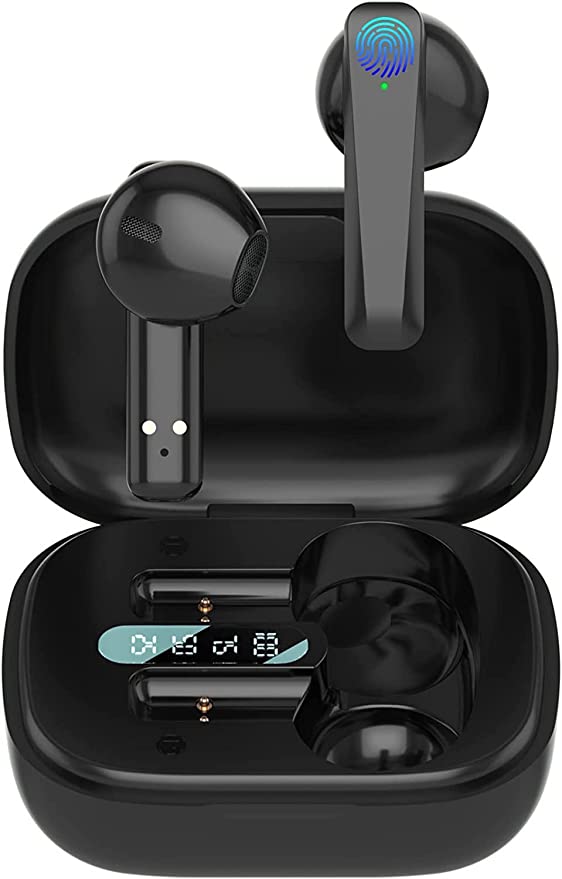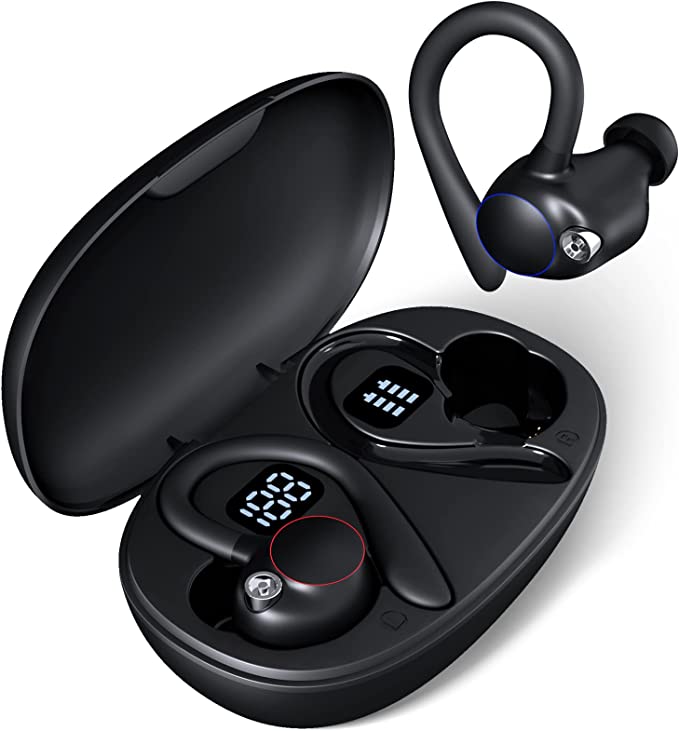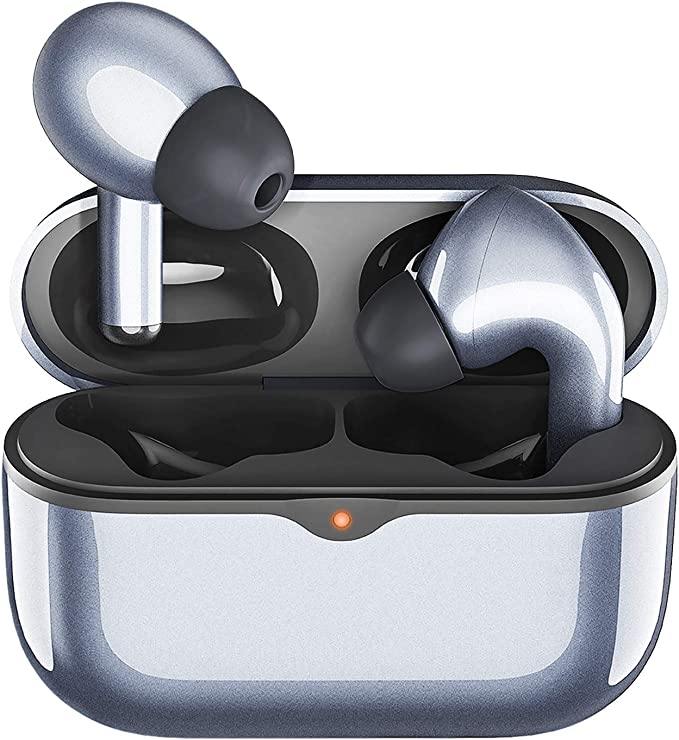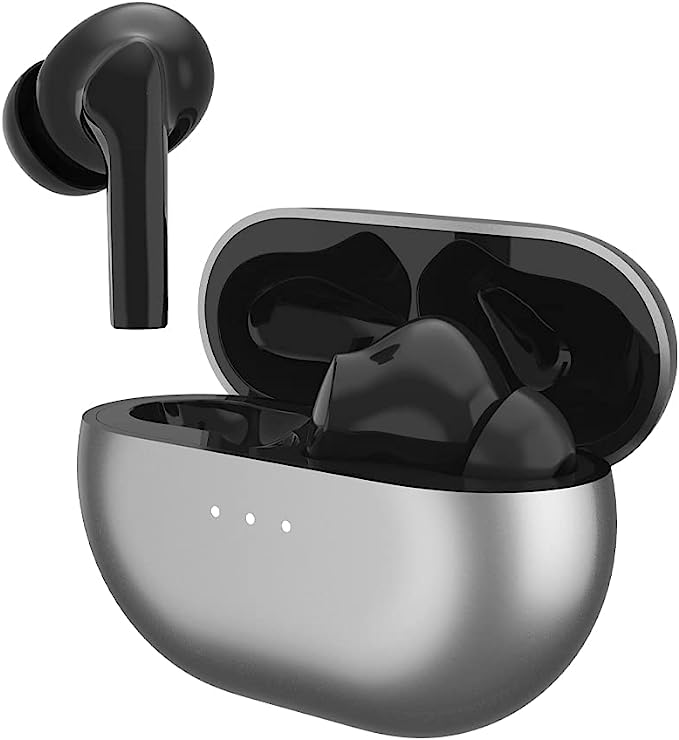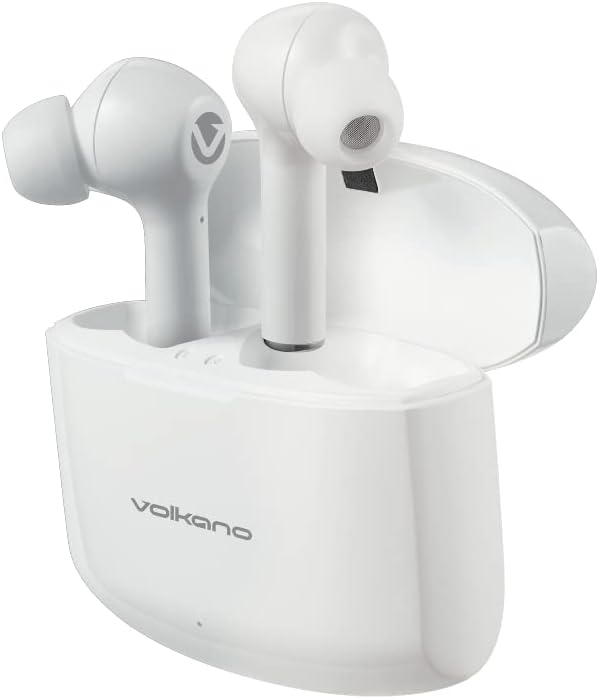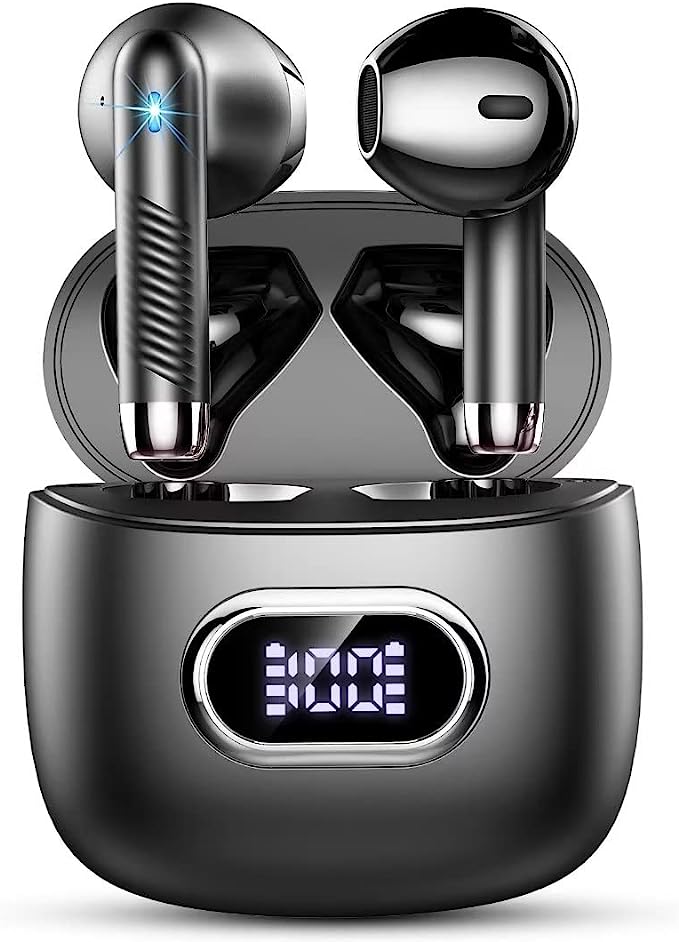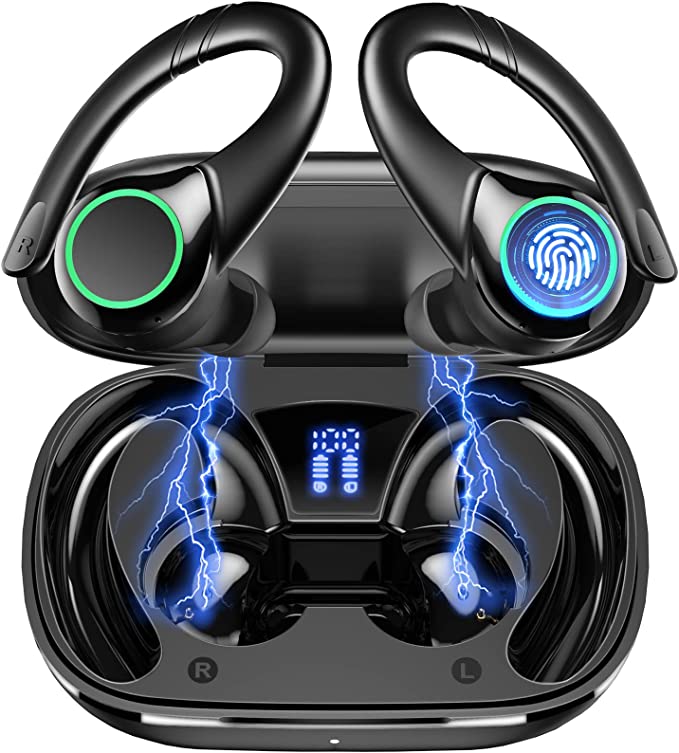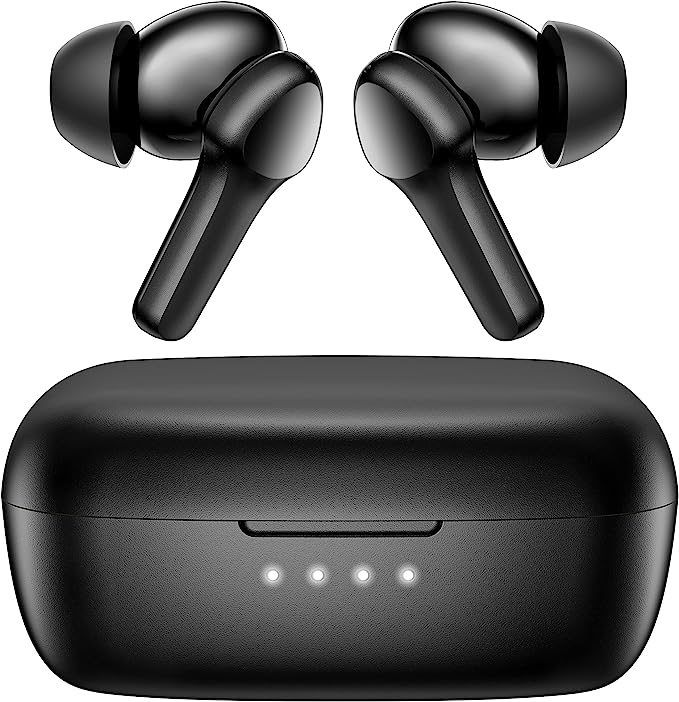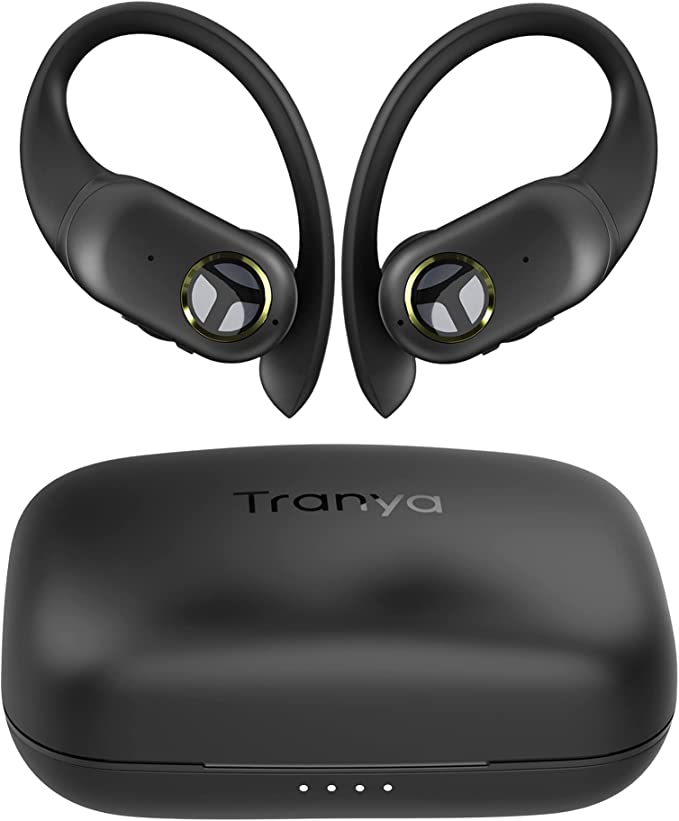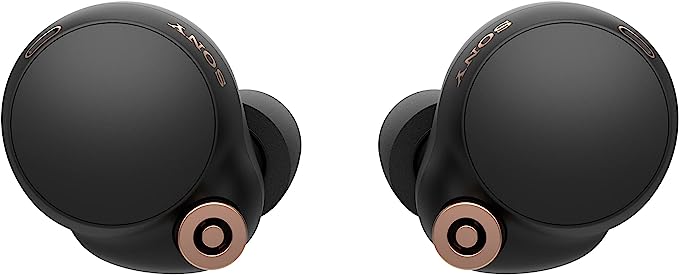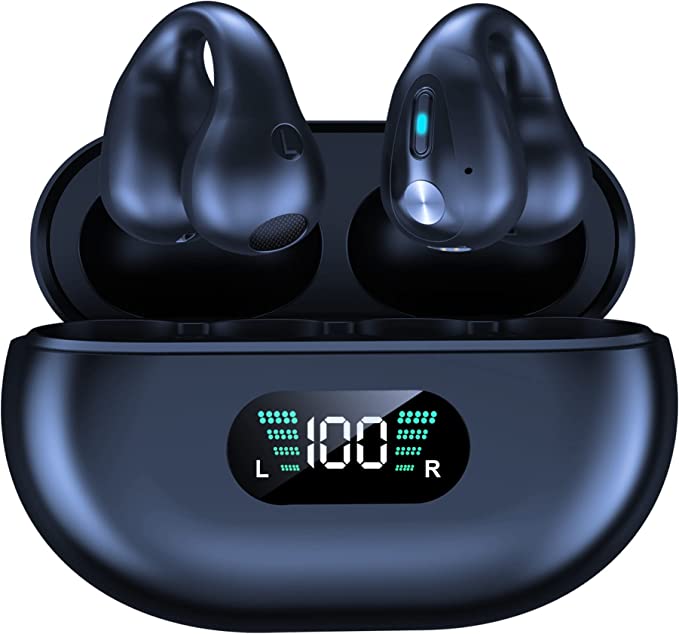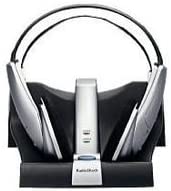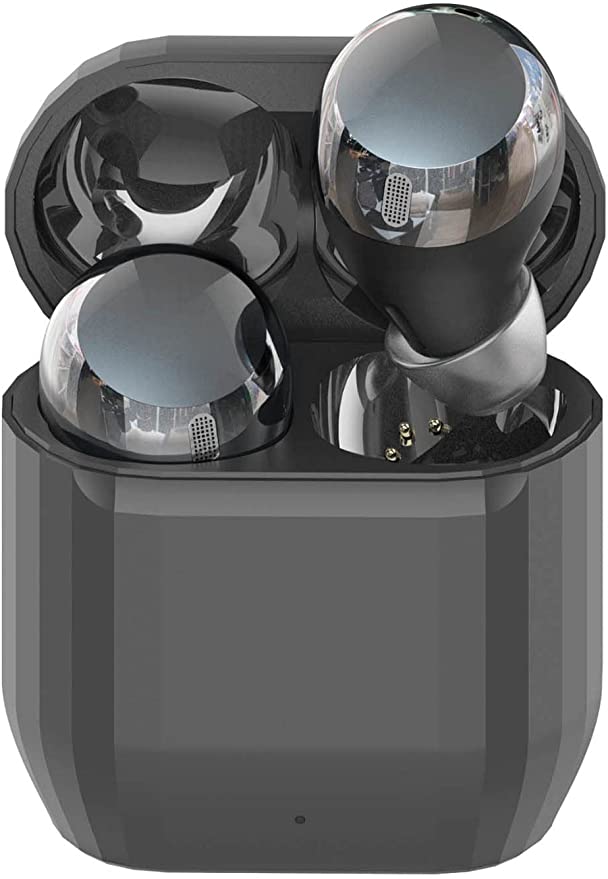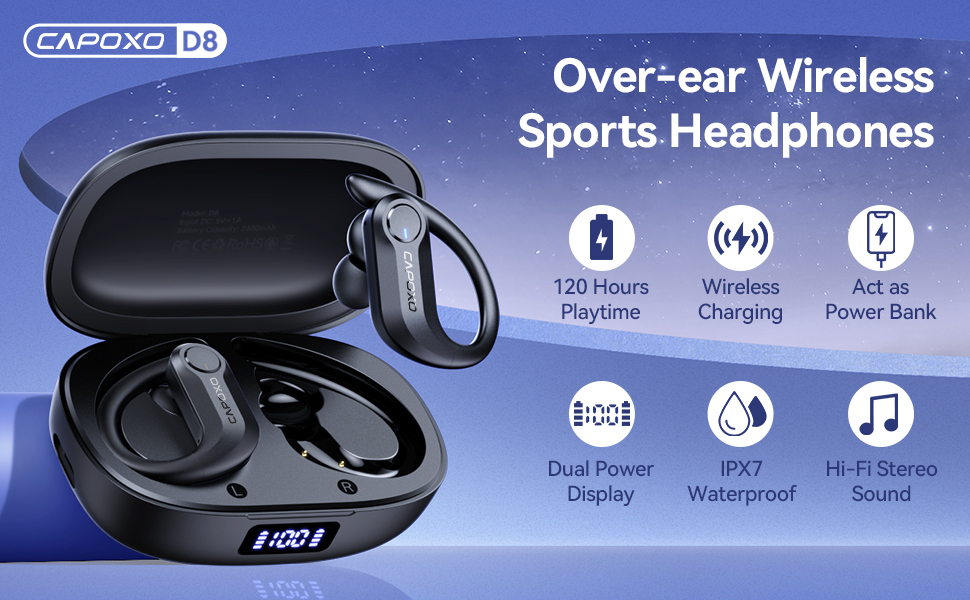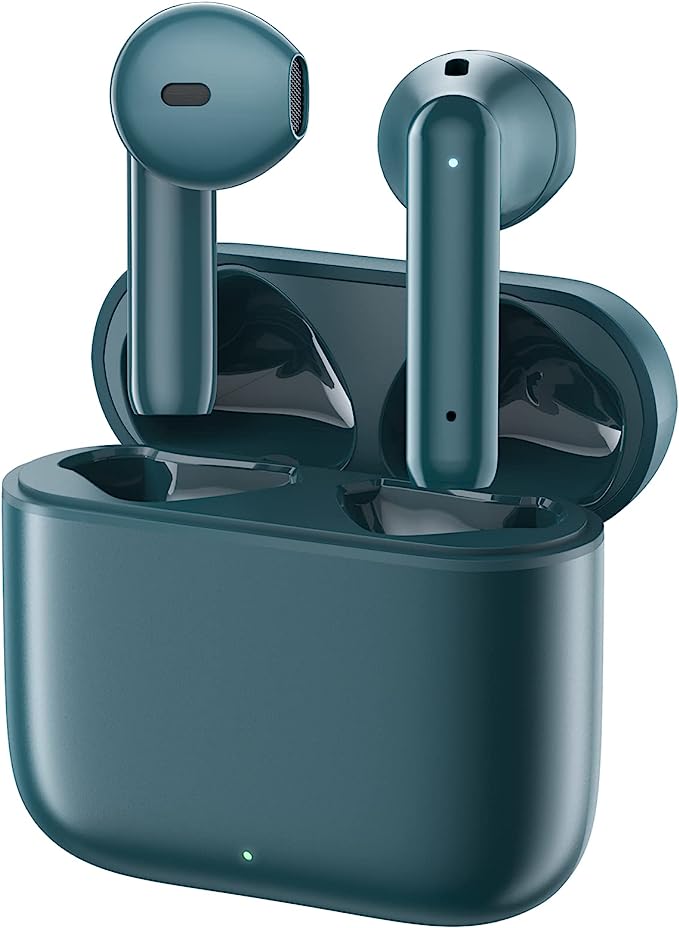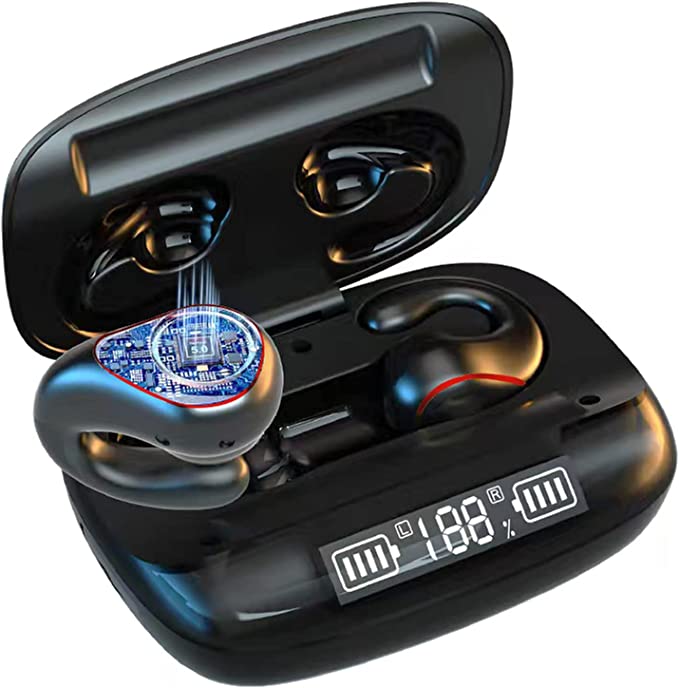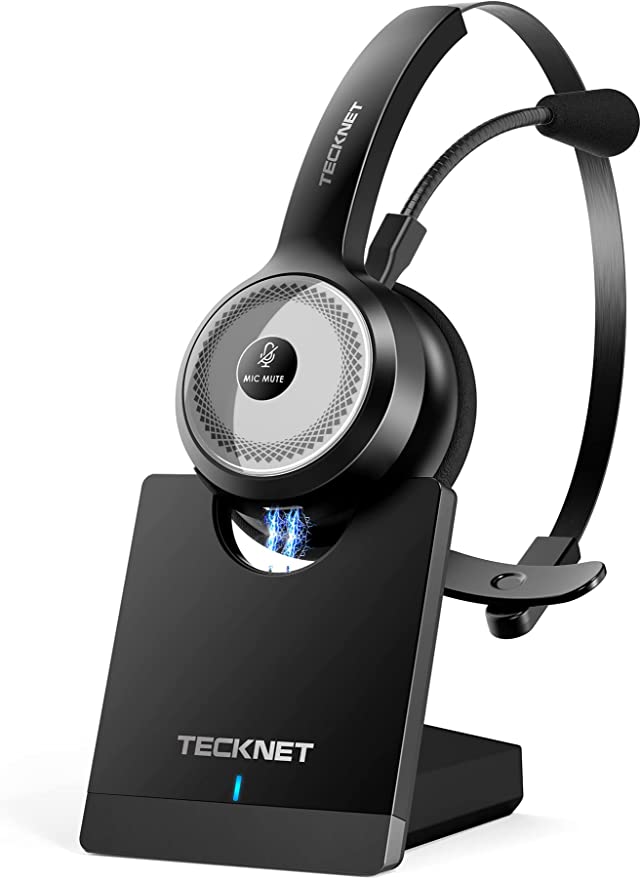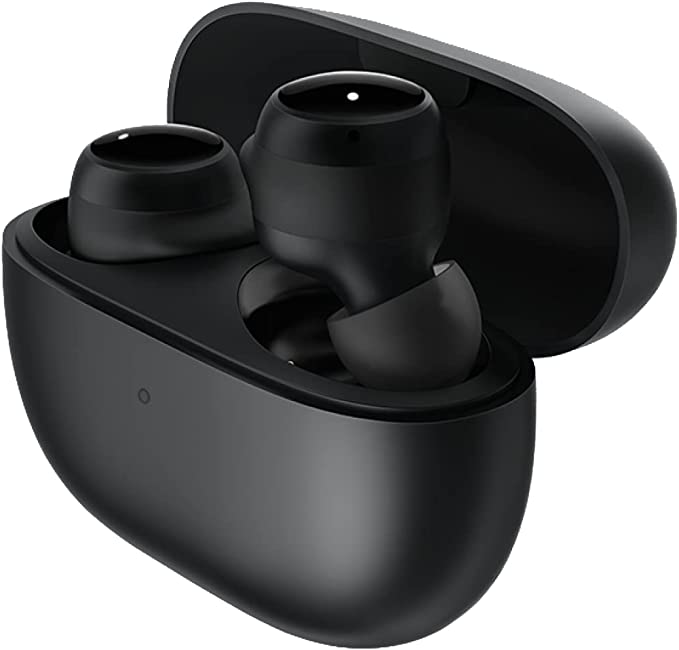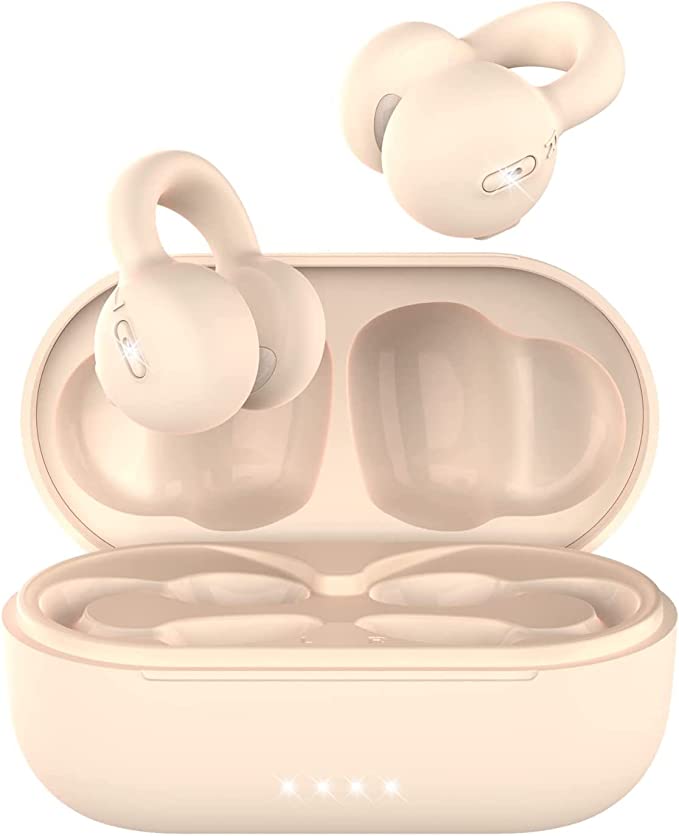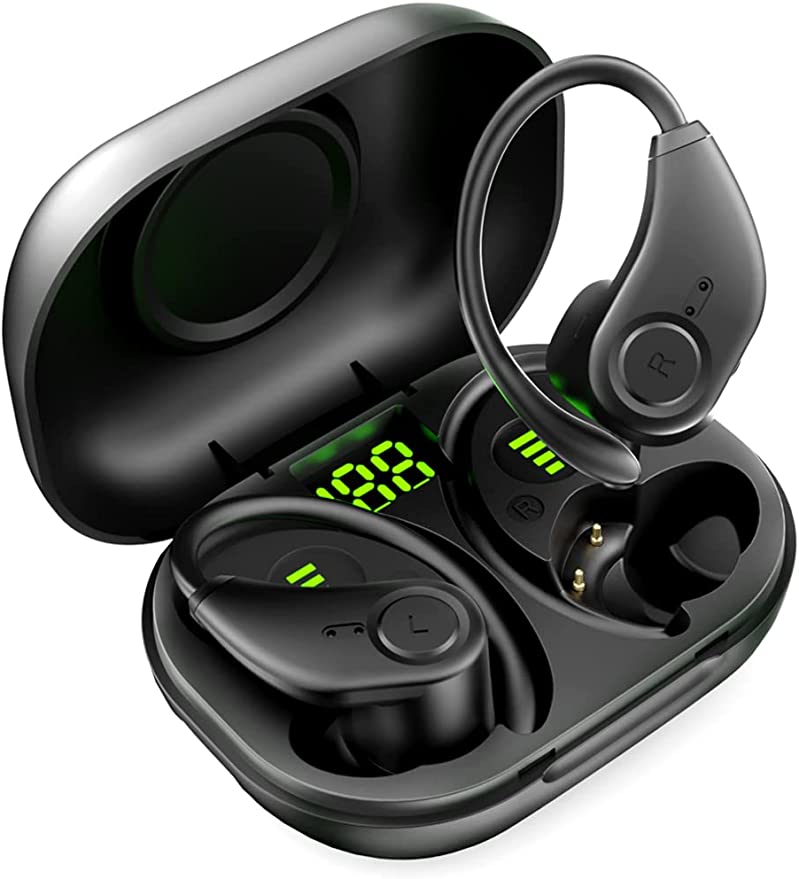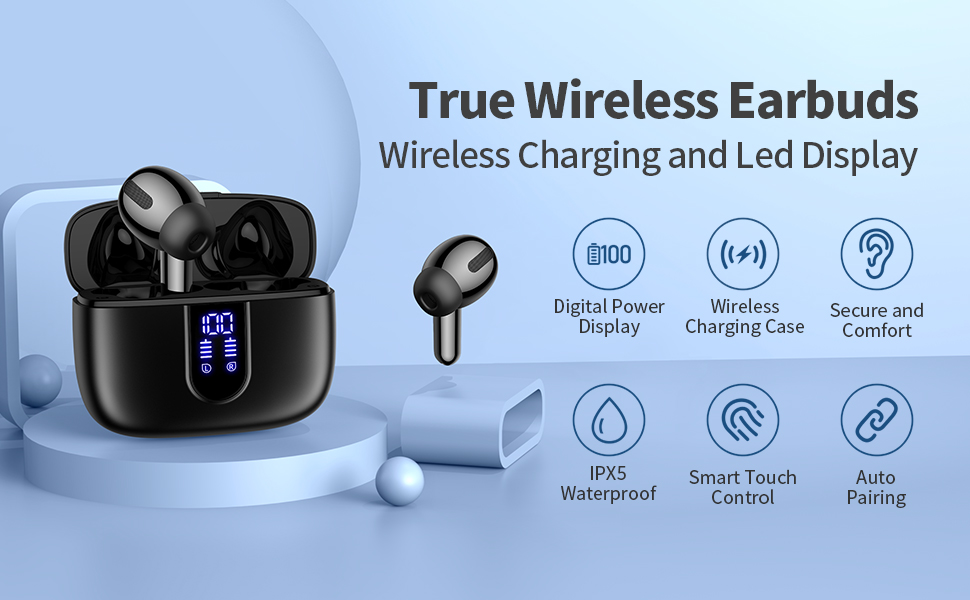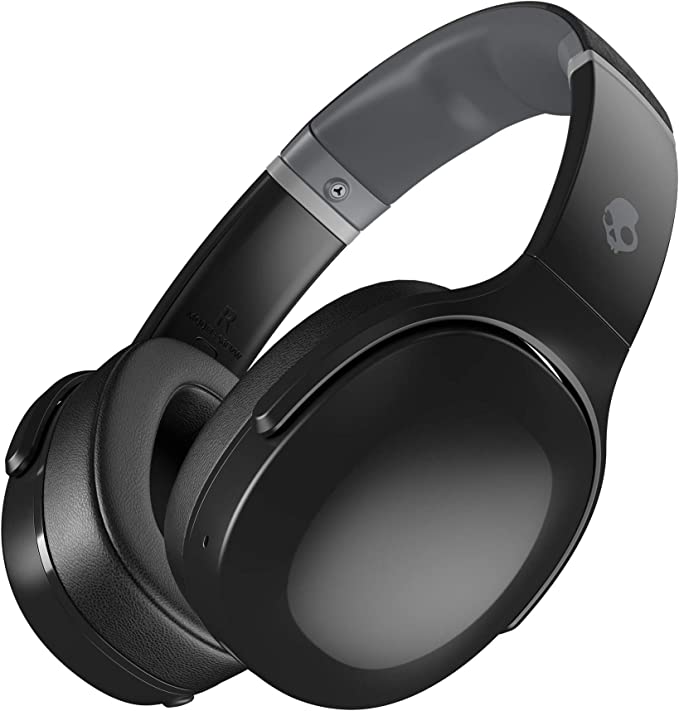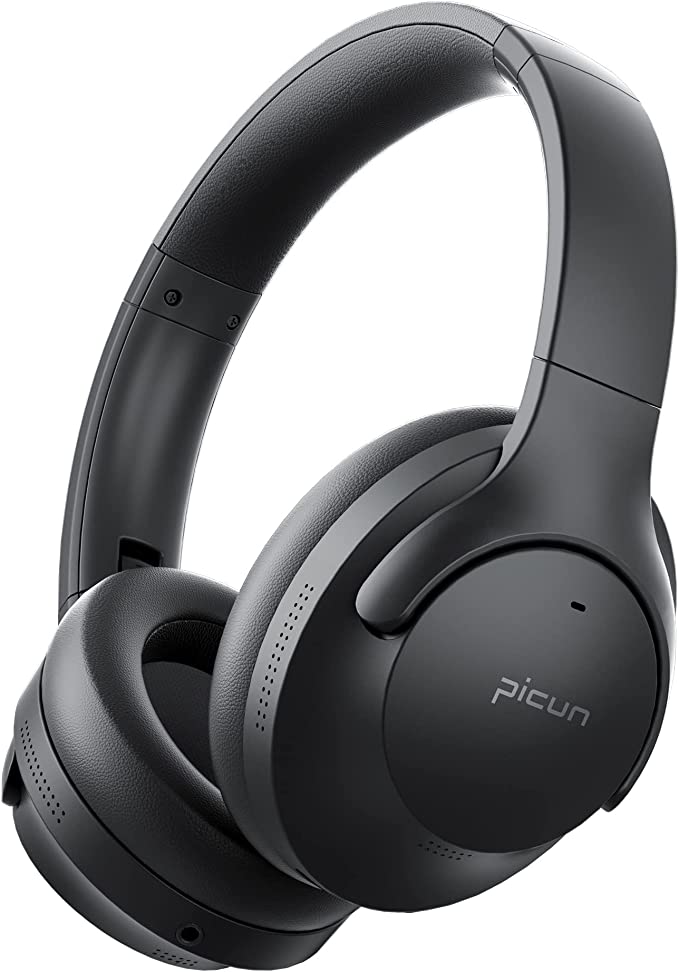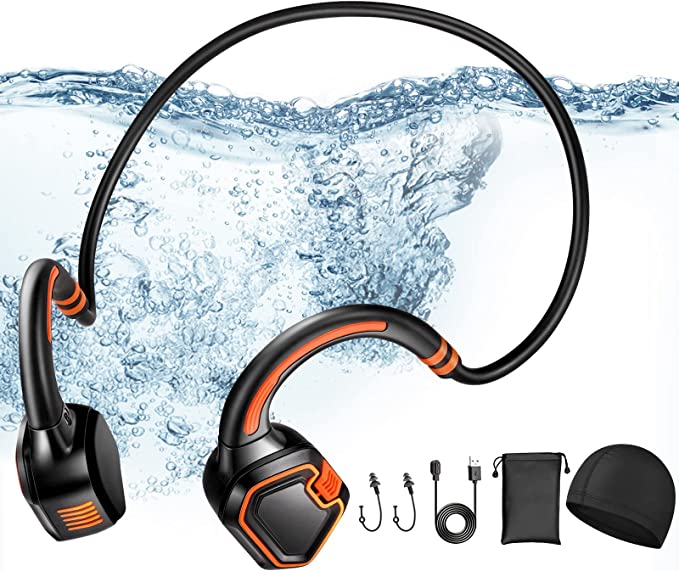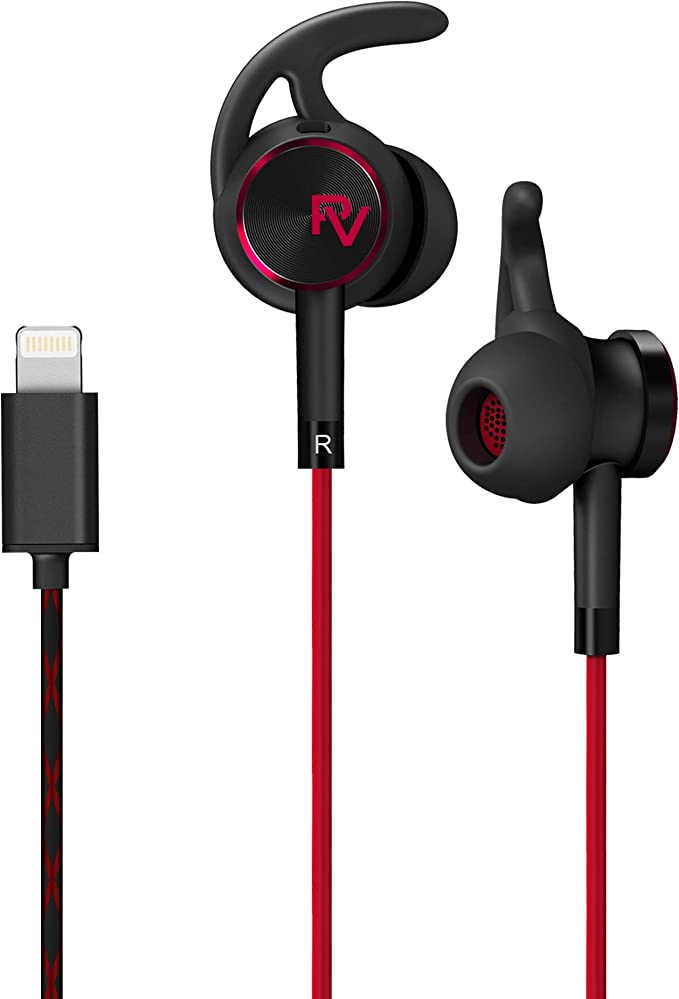xinwld MD026R Wireless Earbuds: The Science of Seamless Sound and Clear Communication
Update on May 15, 2025, 5:59 a.m.
There’s a quiet revolution that has unfolded, quite literally, in our ears. Gone are the days of untangling a Gordian knot of wires just to catch a podcast on the subway, or being tethered to your desk during an important call. Today, tiny wireless earbuds deliver our soundtracks, connect our conversations, and offer a pocket of personal peace in a noisy world, seemingly by magic. But as with all great magic, there’s brilliant science at its core.
Join me, Dr. Evelyn Hayes, as we embark on a journey to decode this everyday marvel. We’ll use the features of a contemporary device, the xinwld MD026R Wireless Earbuds, not as a product review, but as our guide – a set of keyholes through which we can peek into the fascinating universe of audio technology, wireless communication, and acoustic science.

Act I: The Unseen Handshake – Decoding Bluetooth 5.3 and the Dance of Data
Our exploration begins with the very essence of “wireless”: Bluetooth. Specifically, the MD026R earbuds are equipped with Bluetooth 5.3. Now, version numbers can often feel like marketing fluff, but in the world of Bluetooth, each iteration represents a significant, collaborative effort by the thousands of companies within the Bluetooth Special Interest Group (SIG) to push the boundaries of what’s possible.
Think of Bluetooth not just as a single invention, but as an evolving language for devices to talk to each other. Early Bluetooth was revolutionary for its time, but, like any first draft, it had its quirks – connections could be finicky, and audio quality sometimes felt like a compromise. Bluetooth 5.3, however, is a far more polished and robust dialect. It’s designed for inherently faster transmission speeds. This isn’t just about downloading songs quicker; for earbuds, it means a more synchronized experience when you’re watching videos, reducing that annoying lag between what you see and what you hear.
Equally crucial is its stronger connection stability. The science behind this involves sophisticated algorithms for hopping between frequencies to avoid interference and more robust error correction methods. Imagine trying to have a conversation in a crowded room; Bluetooth 5.3 is like having an exceptionally good listener who can pick out your voice amidst the chatter. This translates to fewer frustrating audio dropouts, even when your phone is tucked into a bag or you’re moving around. The MD026R, for instance, claims a connection range of up to 15 meters (nearly 50 feet). This extended leash means more freedom to roam without your audio tether breaking.
But how does your music, stored as digital files, actually make it into your ears wirelessly? This is where audio codecs like AAC (Advanced Audio Coding) and SBC (Low Complexity Subband Codec), both supported by the MD026R, come into play. These are like highly skilled translators, compressing complex digital audio information into manageable packets for efficient Bluetooth transmission, and then decompressing them at the earbud end. SBC is the universal, default codec for all Bluetooth audio devices, ensuring basic compatibility. AAC, often favored in Apple’s ecosystem but widely available, is known for providing better audio quality than SBC at similar bitrates, especially for music. The goal of these codecs is to perform this compression and decompression with minimal loss of the original sound’s richness and detail.
And what about that seemingly instant connection when you flip open the charging case? Many modern earbuds, including the MD026R, employ a clever bit of physics using a Hall effect sensor. This tiny marvel detects the change in a magnetic field when the case lid (which usually has a small magnet) is opened or closed. When you open the case, the Hall sensor signals the earbuds to wake up and automatically attempt to pair with the last connected device. It’s like having an invisible doorman who announces your arrival, making the connection process feel almost instantaneous and wonderfully seamless.

Act II: Sculpting Clarity – The Art and Science of Microphones and Noise Cancellation
In our hyper-connected world, being heard clearly is as important as hearing well. Whether you’re navigating a bustling city street for a crucial business call or trying to coordinate with family from a busy café, ambient noise is the nemesis of clear communication. This is where the MD026R’s four-microphone design (two per earbud) and Environmental Noise Cancellation (ENC) technology step into the spotlight.
First, let’s consider the microphones. Why four? Think of it like this: our own two ears allow us to localize sound and focus our attention. Multiple microphones in an earbud can work on a similar principle, often referred to as a microphone array. Through sophisticated signal processing techniques, often involving a basic form of beamforming, the system can better distinguish between your voice, which originates very close to some of the microphones, and sounds coming from other directions. It’s like having a miniature sound crew in your ears, constantly working to keep the spotlight on your voice.
This brings us to Environmental Noise Cancellation (ENC). It’s crucial to distinguish ENC from its more commonly known cousin, Active Noise Cancellation (ANC). While ANC is primarily designed to quiet your own listening environment by creating “anti-noise” to cancel out ambient sounds around you, ENC is focused on ensuring that the person on the other end of your call hears your voice with clarity, free from the distracting noises of your surroundings.
The science behind ENC involves those microphone arrays working in tandem with intelligent algorithms. These algorithms are trained to identify the characteristics of human speech versus common environmental noises (traffic, chatter, wind). By analyzing the signals from the multiple microphones, the system can emphasize the speech frequencies and actively suppress the unwanted background sounds before your voice is transmitted. So, when the MD026R claims “crystal clear call” quality, it’s this intricate dance of acoustic input and digital processing that aims to deliver your voice, and only your voice, with pristine clarity.

Act III: The Sonic Heartbeat – Crafting Sound with Dynamic Drivers
Once the audio data has successfully navigated its wireless journey and your voice has been meticulously isolated for calls, the final act of reproduction falls to the drivers – the tiny speakers nestled within each earbud. The xinwld MD026R features 13mm dynamic drivers, described as “premium.”
Let’s demystify the “dynamic driver.” This is the most common type of driver found in headphones and earbuds, and it works much like a traditional loudspeaker, only miniaturized. It consists of three key components: a diaphragm (a thin membrane), a voice coil (a coil of wire attached to the diaphragm), and a magnet. When an electrical audio signal (representing your music or the voice from a call) passes through the voice coil, it creates a fluctuating magnetic field. This field interacts with the permanent magnet, causing the voice coil—and thus the attached diaphragm—to vibrate rapidly. These vibrations create pressure waves in the air, which our eardrums perceive as sound. It’s a beautifully direct conversion of electrical energy into acoustic energy.
The “13mm” refers to the diameter of the diaphragm. Generally speaking, a larger diaphragm has the potential to move more air. This can be particularly beneficial for reproducing lower frequencies (bass and sub-bass), potentially leading to a fuller, richer sound with a more substantial presence. While driver size is just one factor among many that contribute to overall sound quality (others include diaphragm material, magnet strength, enclosure acoustics, and tuning), a 13mm driver in an earbud is quite generous and suggests an engineering focus on delivering a robust audio experience. The “premium” quality would then refer to the specific materials used and the precision of its construction, all aimed at reproducing sound with “extraordinary accuracy and clarity,” as the product information suggests.
Act IV: The Unwavering Pulse – Battery Life and the Ergonomics of Endurance
All this sophisticated technology requires power, and in the compact world of wireless earbuds, battery performance is paramount. The MD026R, like most modern portables, relies on Lithium-Polymer (Li-Po) batteries. These cells are favored for their high energy density (meaning they can store a lot of energy in a small, light package) and their ability to be molded into various shapes, making them ideal for the tight confines of an earbud and its charging case.
The product specifications state 5 hours of music playtime from a single charge for the earbuds, with the charging case providing an additional 20 hours, totaling 25 hours of music. Interestingly, for calls, the earbud playtime is listed as 1.5 hours. This difference is quite common and logical. Music playback is a relatively passive process for the earbuds’ processor once the audio stream is established. However, during calls, the earbuds are doing much more: the microphones are active, the ENC processing is working hard to filter noise, and the Bluetooth radio might be communicating more actively. All this extra work naturally draws more power. The charging case itself acts as a portable power bank, ensuring your earbuds are ready for multiple listening sessions.
Replenishing this power is handled by a USB-C quick charge port, capable of fully charging the case in just 1 hour. The USB-C standard has become a welcome norm in consumer electronics due to its robust power delivery capabilities and its user-friendly reversible connector – no more fumbling to plug it in correctly. To keep you informed, an LED power display on the case indicates the remaining battery percentage, a simple but effective feature that adds a layer of predictability to your usage.
Finally, performance isn’t just about specs; it’s also about how the device feels and integrates into your life. The MD026R earbuds are described as “mini ultra-lightweight,” each weighing a mere 4 grams. From an ergonomic perspective, this low mass is critical. Heavier earbuds can cause discomfort and ear fatigue during prolonged use. The science of comfort in wearables dictates that minimizing pressure points and overall weight leads to a more pleasant experience, allowing you to almost forget you’re wearing them. The in-ear form factor also plays a role, aiming for a snug fit that provides some passive noise isolation while ensuring the drivers are optimally positioned to deliver sound directly into your ear canal.

Finale: The Pocket-Sized Orchestra – Where Science Meets Everyday Experience
As we’ve journeyed through the xinwld MD026R, it becomes clear that these tiny devices are far more than just plastic and silicon. They are miniature orchestras of scientific innovation, each component playing a crucial part. We’ve seen the elegance of Bluetooth 5.3 ensuring our connection is as seamless as the Hall sensor that initiates it. We’ve marveled at how multiple microphones and sophisticated ENC algorithms work tirelessly to carve clarity from the chaos of a noisy world. We’ve appreciated the physics behind the 13mm dynamic drivers that bring our music to life, and the chemistry within the lithium-polymer cells that keep the symphony playing.
This intricate interplay of wireless communication, acoustic engineering, material science, microelectronics, and intelligent software, all meticulously miniaturized, ultimately serves a very human purpose: to connect us, to entertain us, to inform us, and to give us control over our personal soundscape.
The journey of personal audio technology is one of relentless refinement and innovation. While the xinwld MD026R represents a snapshot of today’s capabilities, the scientists and engineers behind these technologies are already dreaming of what tomorrow will sound like. And that, perhaps, is the most exciting note of all.

